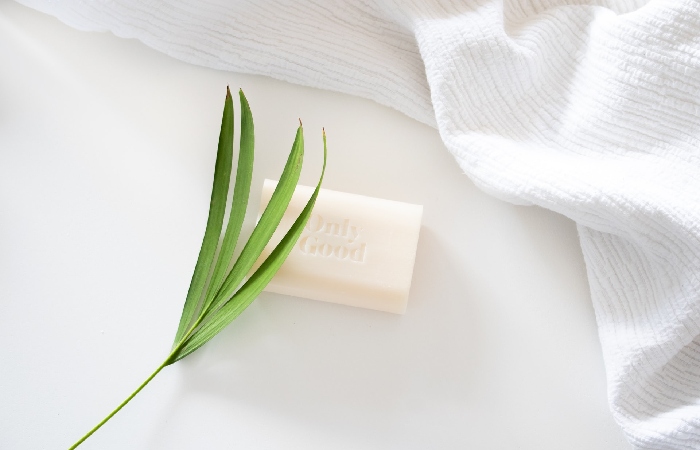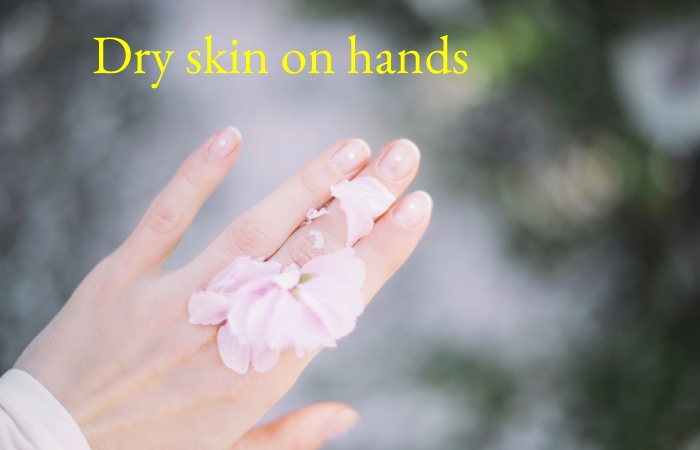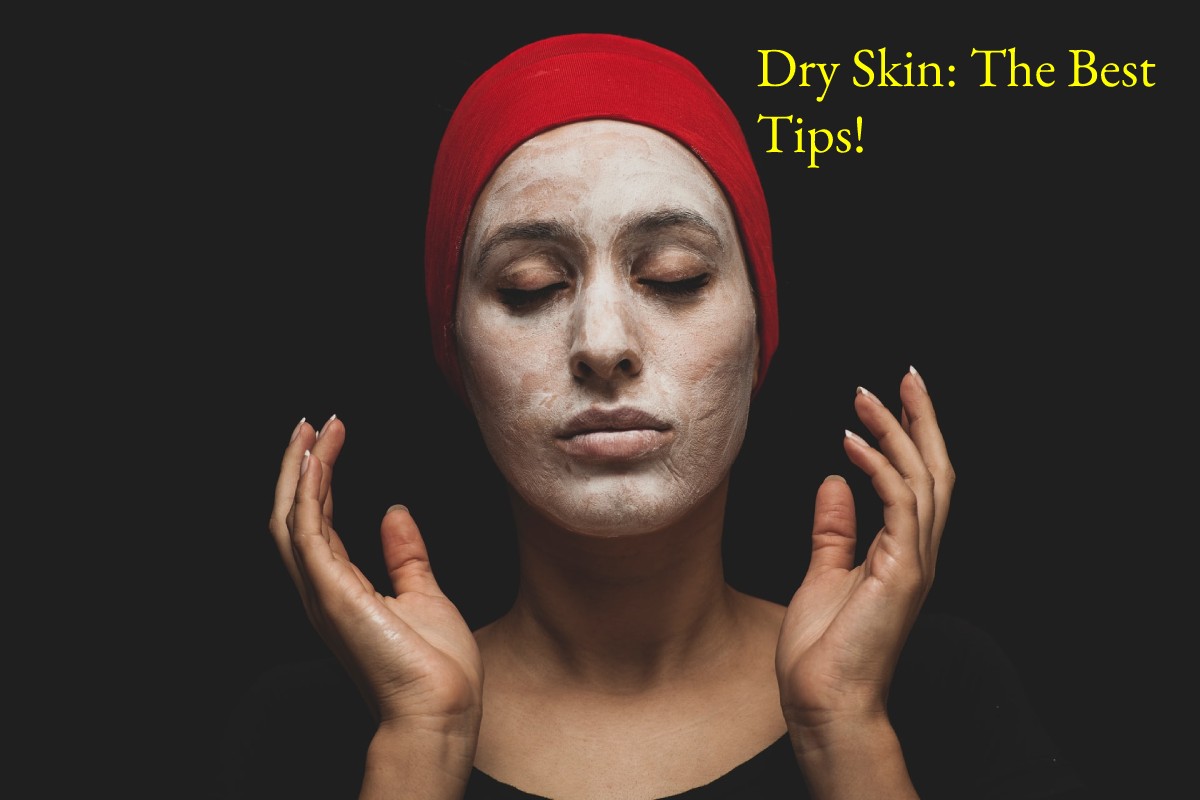Warming of the air, age, or lack of care: dry skin has various causes. We explain exactly how this happens, what helps against it, and what simple measures you can take to prevent dry skin.
Itchy, tense, and rough: Dry skin, medically known as xerosis, is uncomfortable and, in some cases, even leads to inflammation. Almost 30% of Germans suffer from dry skin, and nearly everyone in the age group over 60 is affected.
Dry skin is particularly noticeable after washing, and it is typical for them to peel off or have reddish spots. If the skin dries out very severely, it can lead to dry areas that require treatment in extreme cases.
The skin of the face, hands, and legs is often affected, and the skin of the shins, in particular, is fragile and hardly stores any moisture. But the typical symptoms also often appear on the elbows.
The triggers for dry skin are different. Behind this are external and internal factors, and we will introduce them to you in more detail.
Table of Contents
These are the causes of dry skin!
Dry skin occurs when the sebaceous glands produce too little oil (sebostasis). As a result, the protective fatty film on the skin is missing, and the effect: Becomes cracked and brittle. In addition, their protective function is impaired.
This hurts their defence mechanism against, among other things, sunlight or pathogens. Dry skin is also less able to regulate body temperature and water balance.
But how does dry skin develop? Various factors can be considered as triggers:
internal factors
Advanced age, side effects of medication, or stress: On the one hand, internal factors often lead to dry skin.
Hereditary predisposition and age
Dry skin is based, among other things, on a hereditary predisposition. For example, blonde people are generally more likely to do this. In addition, children have significantly softer and, therefore, drier skin than adults – at least up to middle age.
Because with increasing age, the probability of having dry skin rises significantly. The reason: the skin changes. Your humidity drops. In addition, it can no longer store moisture, and the sweat glands also produce less sweat. Another factor: Older people often drink too little water.
Diseases
Various diseases dry out the skin. These include, among others:
- allergic
- neurodermatitis
- psoriasis
- Intestinal diseases such as Crohn’s disease
- celiac disease
- diabetes
- contact cement (rash)
- erysipelas (inflammation around the mouth)
drug
Various medications cause dry skin as a side effect. These include antibiotics, drugs to treat tumours, epilepsy, medicines for pain, and rheumatism.
hormonal fluctuations
Dry skin caused by hormonal fluctuations mainly affects women during pregnancy and menopause.
lifestyle
In some cases, an unbalanced lifestyle also leads to dry skin. Risk factors include extreme alcohol consumption, smoking, and not drinking enough water. The guideline is at least 1.5 litres of water or unsweetened tea per day, more in summer. Stress also has a detrimental effect on the skin.
Poor nutrition also affects the condition of the skin. Among other things, omega-3 fatty acids, vitamins, and minerals should be a regular part of your diet.
external factors
Dry heating air, long sunbathing in summer, or showers that are too hot: Various external factors also harm the skin’s condition.
weather
In summer, as in winter, the weather influences the condition of our skin. In winter, it often suffers from dry heating air. The sebaceous glands also stop producing at a temperature below eight degrees. Since we generally sweat less in winter, less moisture gets into the epidermis.
Dry skin is ubiquitous on body parts that are not protected by clothing during the cold season, including the face, lips, and hands.
In summer, we sweat more, but we also lose more fluid as a result. If we then drink too little water, the skin dries out quickly. Direct sunlight and air conditioning also cause the skin to lose moisture.
soap and chemicals

Hot showers or baths and harsh soaps tire our skin. Cosmetics with fragrances or preservatives also hurt the condition of the skin. Chlorine also attacks the skin’s natural oil and water layers.
shave

Wet shaving the legs puts a strain on the skin, and she is often irritable after waxing. Therefore, you must apply lotion to your legs after wet shaving – for example, with creams containing chamomile or jojoba oil. Otherwise, your skin will quickly dry out.
This helps against dry skin
To properly treat dry skin, you must first find the trigger. If medication is the cause, talk to your doctor. Dry skin needs a lot of oil and moisture. Only wash dry skin with gentle substances, preferably pH-neutral and fragrance-free. Only take a lukewarm shower and always apply plenty of lotion afterwards.
Depending on where on the body dry skin occurs, there are specifics you need to pay attention to.
Dry skin on the face
Dry facial skin appears thin, transparent, and dull. Sometimes it flakes off and is rough. Due to its little fat and moisture content, dry facial skin tends to react very sensitively to environmental influences and age faster. Careful maintenance is therefore essential.
Use skincare products with higher fat content. They must be free from fragrances and preservatives. Toners and moisturizers also keep the skin supple, and a mask once a week is also good for your facial skin.
A cream and honey mask is easy to make at home: mix two tablespoons of sour cream with one tablespoon of honey and add enough wheat germ flakes to make a thick porridge. Rub it on your expression and leave it on for 15 minutes. The best time for this honey cream mask is early evening.
The effect: Cream and honey moisturize your dry skin, and honey dressings also have an anti-inflammatory and disinfecting effect.
Especially in winter, dry skin is exposed to a lot of stress – so pay special attention to rich care. Gentle scrubs and facials keep dry skin soft.
For example, care sticks with jojoba oil or beeswax are suitable for the lips. If you donate a lot of time outside in the sun, you should ideally use one that also has a UV filter.
Dry skin on hands

Hands are often confronted with the sun and mechanical friction in everyday life, and they also come into contact with water several times a day. The thin skin on the spinal of the hand, in particular, dries out quickly, and it gets rough and cracked. That makes her even more vulnerable. In the worst case, inflammation and infection develop.
Therefore, only clean your hands with high-quality products. Cheap soaps, for example, often degrease the skin and throw the natural pH balance out of balance for hours. Mild, slightly acidic washing lotions are also suitable.
Always dry your hands well after washing and apply lotion to them at least after each contact with water. In severe cases, use a water-in-oil emulsion cream in the evening.
Sodium chloride ointment with lipophilic urea is a good lubricant with so-called natural moisturizing factors (NMF). It smoothes the skin very sustainably and is available in pharmacies. A particular hand peeling once or twice a week is good for your hands. A hand mask also cares for dry skin.
When choosing your hand cream, pay attention to the following nourishing and anti-inflammatory ingredients:
- urea (urea)
- 10 to 20% glycerin
- vitamin E
- allantoin
- bisabolol
- Witch Hazel Extract
- panthenol
On the other hand, avoid paraffin and silicones. In some cases, they swell the skin, making it less receptive to other substances.
Dry skin on legs
Especially in winter, hot air dries out the skin on the legs. Legs often itch when the skin lacks moisture. But avoid scratching yourself. Body lotions that contain at least 20 or 30 per cent fat can help. Urea creams are also suitable for dry skin on the legs.
If the skin on the legs is dried out and stressed by frequent wet shaving, proper care is also essential. Use a moisturizing shaving foam and apply a rich lotion to the legs after shaving.
If your legs continue to itch despite using moisturizer, or you can’t take it anymore, it’s a good idea to see a doctor. In some cases, diseases such as neurodermatitis or psoriasis are the cause.
Home remedies for dry skin
According to testimonials from those affected, various home remedies positively affect the skin in some cases. This contains:
olive oil
Olive oil provides the skin with nourishing active ingredients, makes it soft, keeps it elastic, and strengthens the connective tissue. It contains monounsaturated fatty acids that protect the skin from drying out. Apply directly to dry skin or take a bath and add as an additive.
A lotion with olive oil and witch hazel is perfect for dry skin. To do this, mix 30 millilitres of witch hazel water with 70 grams of lanolin and add 30 millilitres of olive oil. Mix everything well and pour into a glass with cream.
coconut oil
Whether you have dry legs, elbows, or face: Coconut oil protects the skin and makes it soft and supple. It is suitable for treating skin conditions and relieving feelings of tightness.
A homemade ointment based on coconut oil, honey, and essential oils has a nurturing and calming effect.
For this, you need:
- 100 grams of coconut oil
- 60 g shea butter
- Two tablespoons of honey
- 5 to 10 drops of vital lavender oil
- 5 to 10 drops of tea tree essential oil
Here’s how it works:
Melt coconut oil and shea butter in a water bath. Add honey and essential oils and mix well. Let the mixture cool until it turns milky. Beat everything together with a hand mixer until creamy. Then pour everything into a glass and refrigerate.
Lawyer
Avocado oil preserves or restores the moisture balance of our skin, and it makes the soft skin firm and relieves irritation. It contains palmitic, palmioleinic and seric acid. They are also contained in our natural skin lipids (skin fats), which form the critical protective acid mantle. This helps the skin, for example, to ward off pathogens from the outside.
As people produce fewer and fewer fats as they age, skin becomes drier. Avocado oil compensates for this deficit, and it also contains phytosterols. They are cosmetic smoothing and softening agents, and they stabilize the skin barrier and inhibit inflammation.
For an avocado face mask, mash 1/4 ripe avocado with 1 teaspoon whole milk yoghurt. Apply the mixture to cleansed face, and permission is happening for 15 minutes. Then remove the adhesive with a damp washcloth.
Diet for dry skin
The skin’s fats are essential moisturizers for dry skin, and they retain water in the skin and form a barrier against water loss. The fatty acids in our diet have a significant impact on the skin, and you should therefore include the following foods in your diet.
- Consume 2-3 teaspoons of high-quality, cold-pressed vegetable oil daily—sesame, corn, sunflower, or safflower oils are acceptable.
- Fish, nuts, and seeds also contain polyunsaturated fats that are good for our skin.
- Eat foods rich in vitamins A, E, C, and zinc regularly. Nutrients are liver, fish, egg yolks, citrus fruits, olive oil, margarine, legumes, beef, and grains.
- Gamma-linolenic acid is also essential. It is found in pomegranate seeds and hemp oil.
- Drink plenty of liquids – preferably water, unsweetened tea, or fruit sprays. Avoid alcohol, and it dries out the skin.
Prevention of dry skin
To prevent dry skin, pay attention to these things in everyday life:
- Don’t overheat in winter. The correct room temperature is 18 to 20 degrees, and the ideal humidity is 40-50%. If it’s too low, place a bowl of water over the radiator.
- Intensive care for your skin after showering or bathing with a moisturizing cream.
- Don’t dry yourself too much after bathing or showering. Creams and lotions work best on damp skin!
- Please don’t use too much soap and bath products, and they destroy the skin’s moisture film in sensitive people.
- Avoid prolonged sunbathing! It dries out the skin.
- Get plenty of exercise in the fresh air. This promotes blood circulation and prevents the skin from drying out.
When to the doctor?
If you generally have dry skin or are due to clear and treatable causes, you do not need to see a doctor. It often makes sense to care for the skin with moisturizing products.
However, a doctor’s visit is necessary in the following cases:
- Dry skin does not disappear over a long time – even rich care does not change that.
- Dry skin comes on suddenly and for no apparent reason.
- The itching is unbearable.
- The skin becomes scaly, painful, red, and inflamed.

